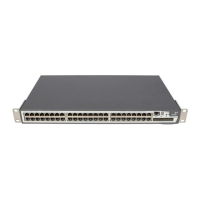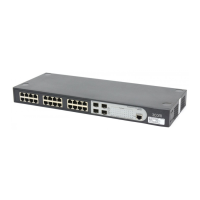6
S
PANNING
T
REE
P
ROTOCOL
(STP)
Using the Spanning Tree Protocol (STP) functionality of the switch makes
your network more fault tolerant. The following sections explain more
about STP and the STP features supported by the Switch 9100.
STP is a part of the 802.1D bridge specification defined by the IEEE
Computer Society. To explain STP in terms used by the 802.1D
specification, the Switch 9100 will be referred to as a bridge.
Overview of the
Spanning Tree
Protocol
STP is a bridge-based mechanism for providing fault tolerance on
networks. STP allows you to implement parallel paths for network traffic,
and ensure that:
■
Redundant paths are disabled when the main paths are operational
■
Redundant paths are enabled if the main path fails
CAUTION:
You should not configure any STP parameters unless you have
considerable knowledge and experience with STP. The default STP
parameters are adequate for most networks.
Figure 13
shows a network containing three LAN segments separated by
three bridges. Using this configuration, each segment can communicate
with the others by using two paths.

